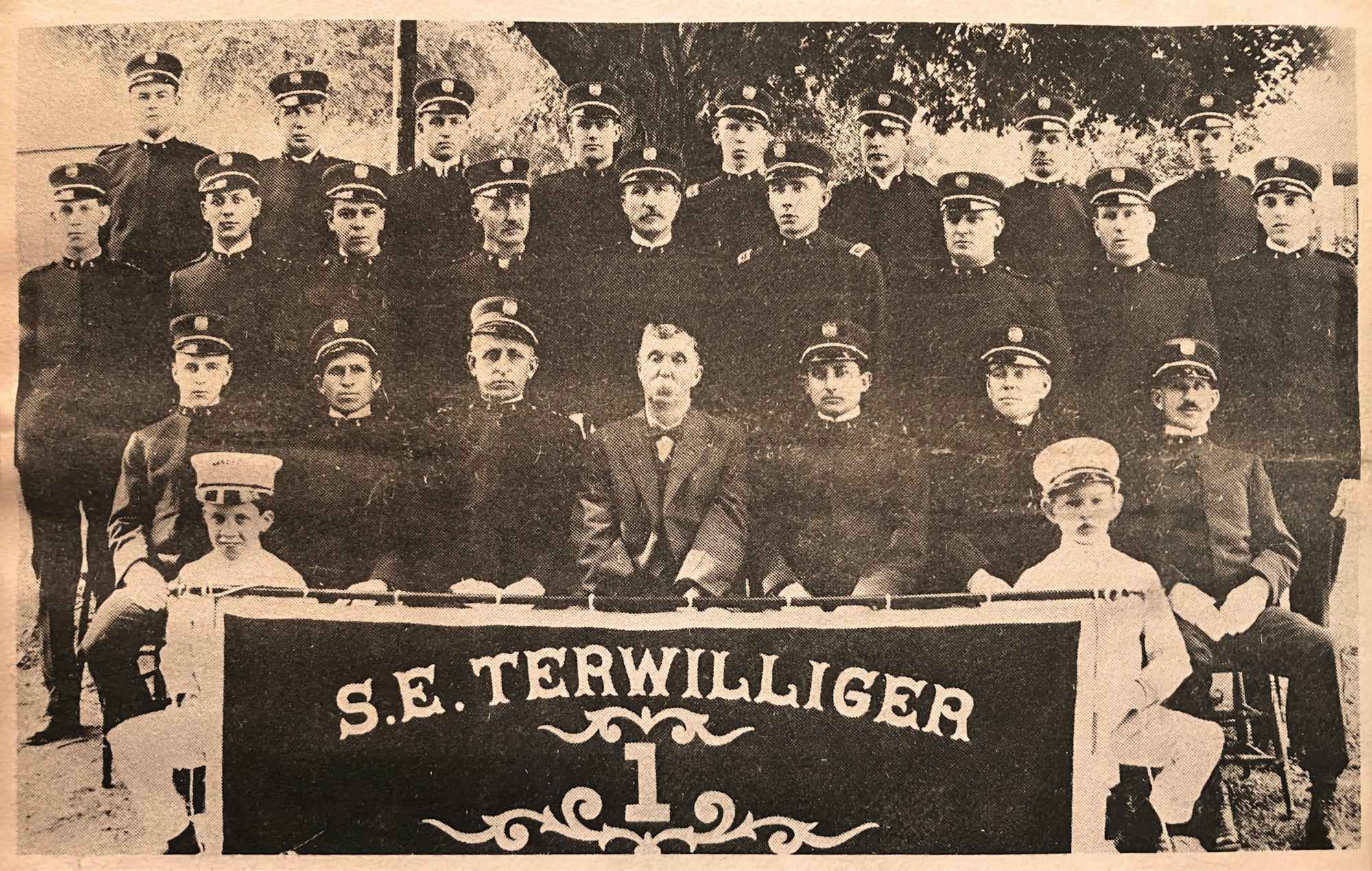History: 1913-1988
History of Minoa Fire Department

Volunteers Celebrate 75th Year
By Rosalie Mastrobattisto
Originally published in the Eagle Bulletin on April 13, 1988. Reprinted with permission. Note that this piece was writtin in 1988.
The Minoa Fire Department will begin a year long celebration of 75 years of service to the Minoa Fire District with a dinner dance April 16 at the Holiday Inn on Carrier Circle. Congratulatory proclamations, from various government agencies, will be read to more than 200 people attending the event.
Organized in 1913 when the village was incorporated, the fire department was preceded by more informal fire fighting methods. In the late 1880s neighbors, without training or leadership, answered calls for help and formed bucket brigades.
The Minoa Fire Dept. now protects both the village and its surrounding area including the growing community of Fremont.
The department has 56 men and eight women who are active in fire and ambulance service and are proud of their commitment to serve fire district residents. The Auxiliary, founded in 1930, by Alma Lowe, Frances Huntley, Bessie Meehan, and Ceil Kippley, presently has 20 members who support the firemen.
Civic accomplishments, throughout the years, by this dedicated group include an Explorer Post for 14-18 year olds, sponsorship of Little League teams, as well as emergency rescue and first aid skills that save lives.
The 75th anniversary year celebration will include an Awareness Day and special Awareness Day and special events during the annual Firemen's Field Days June 2, 3, and 4.
In 1906, the short-lived Minoa Fire Brigade No. 1 was organized. It was hoped that the community's young men could become trained in fire fighting techniques and eventually form a fire company. Peter Huller, temporary Chief, was assisted by Floyd Terwilliger, Floyd Lewis, Leo Helfer, Floyd House, Abraham Morrison, and Norbert Carhart. Also, Earl Hofmire, Edward Spencer, Wesley Henderson, Carl Norman, Frederick Brooks, and Ernest Carhart.

The first piece of equipment, a hand engine capable of carrying 50 feet of hose, was donated by Rectenwald Brothers of Louisville, Ky. D.D. Costello and Son of North Manlius made the carriage alterations that were needed.
The forerunner of the present department, The Minoa Hose Co., was formed April 13, 1913. The name was later changed to the S.E. Terwilliger Hose Co. No. 1 in honor of Minoa's Village President Stanley E. Terwilliger.

Grocer Jesse Leonard, who served for 10 years as Minoa School Board president, was a charter member and first acting chief. W.E. Gay was foreman; Jesse Leonard, first assistant foreman; Wallace Gayring, second assistant foreman; Clarence Helfer, secretary; and Clayton Flanigan, treasurer; were the first elected officers.
Equipment at that time included two horse drawn chemical carts and a horse drawn ladder truck. It became necessary to station two hose carts on the south side because the village was divided by railroad tracks and trains passing through the village often made it impossible to reach fires. This continued until the Costello Parkway bridge across the tracks was completed in 1959. It was then necessary to construct an addition to the original Village Hall, built in 1926, which is the present department's home.
Through the years, until 1926 when the Village Hall was built, the group met in Helfer and Leonard's Store, Flanigan and Sampson's Store, rooms rented from A.J. Helfer, an old school building, or the offices of G.H. Goodelle.
Under Chief Nathan Merritt the S.E. Terwilliger Hose Co. became known as the Minoa Fire Dept. in 1926. The first motorized equipment, a 500 galIon Buffalo pumper, was bought in 1926 and a 750 gallon Buffalo pumper in 1929. Fire hydrants and a fire house on South Main St. were added in 1926

During Britton Vannauker's leadership as chief, from 1935 until 1965, the Minoa fire district was expanded to its present limits that includes the growing community of Fremont. A 1938 utility truck, a new pumper and two 750 GPM Macks were purchased; First Aid training was undertaken; and a series of prevention campaigns were launched.
The village's largest fire took place April 22, 1940, when St. Mary's Church was destroyed at an estimated loss of $50,000.
In the same year, Chief Vannauker's dream of a countywide mutual aide plan became a reality.
Responsibilities increased in 1968 when department personnel, under Chief John Meehan's direction, began first aid and emergency care training needed to man the ambulance purchased with $12,000 with funds raised by the Minoa and Fremont Lions Club.

While Chief Clark Krafft and Chief David Van Marter were in office, much of the current equipment, now supervised by Chief David Matthes, was acquired. These include five engines, one squad truck, two rescue vehicles, and an ambulance.
Ground will be broken this spring for Station Two on Rt. 290 in Fremont. This will improve response time in the growing Fremont area. A 1,500 gallon tanker pumper will also be purchased.
